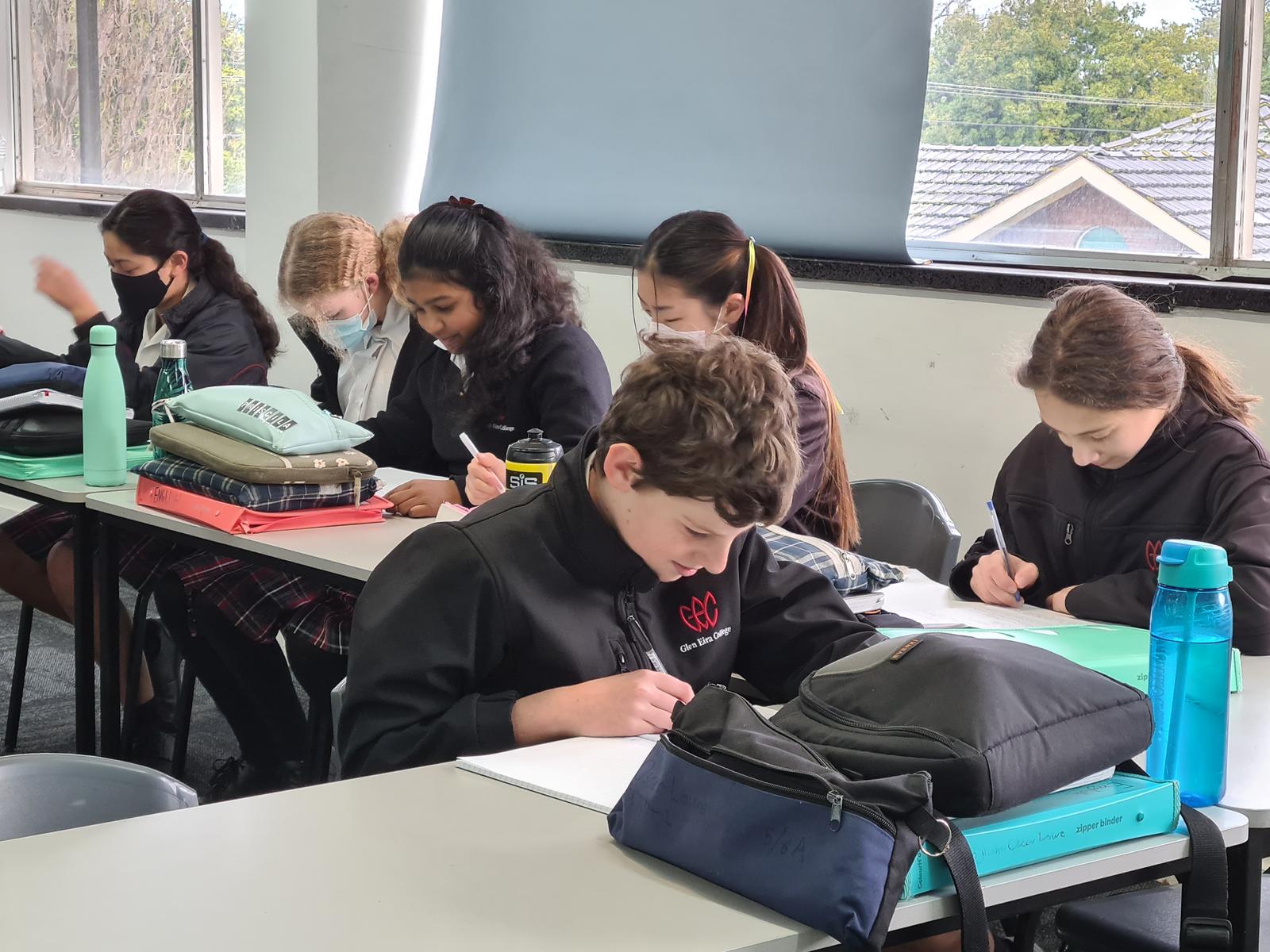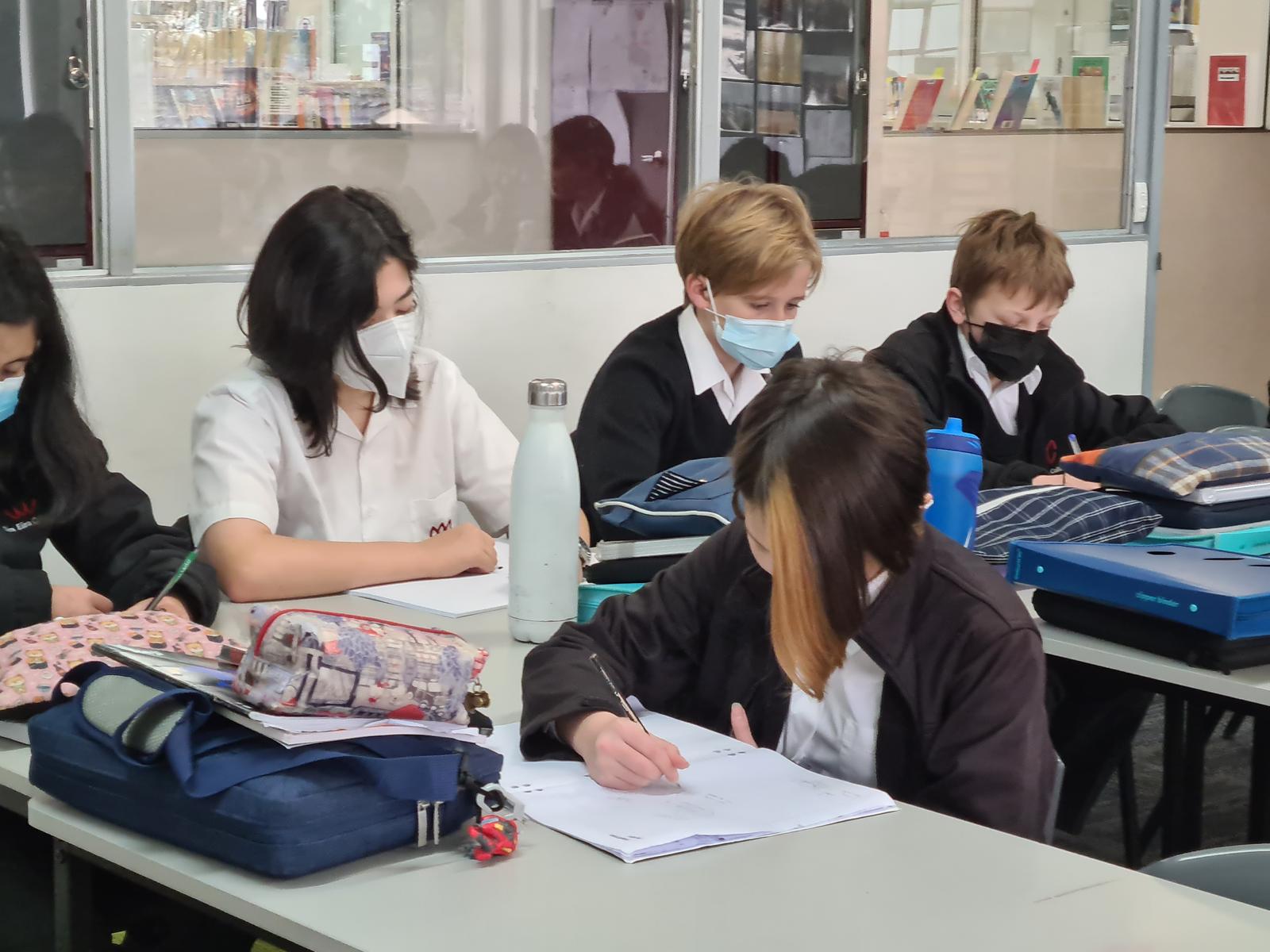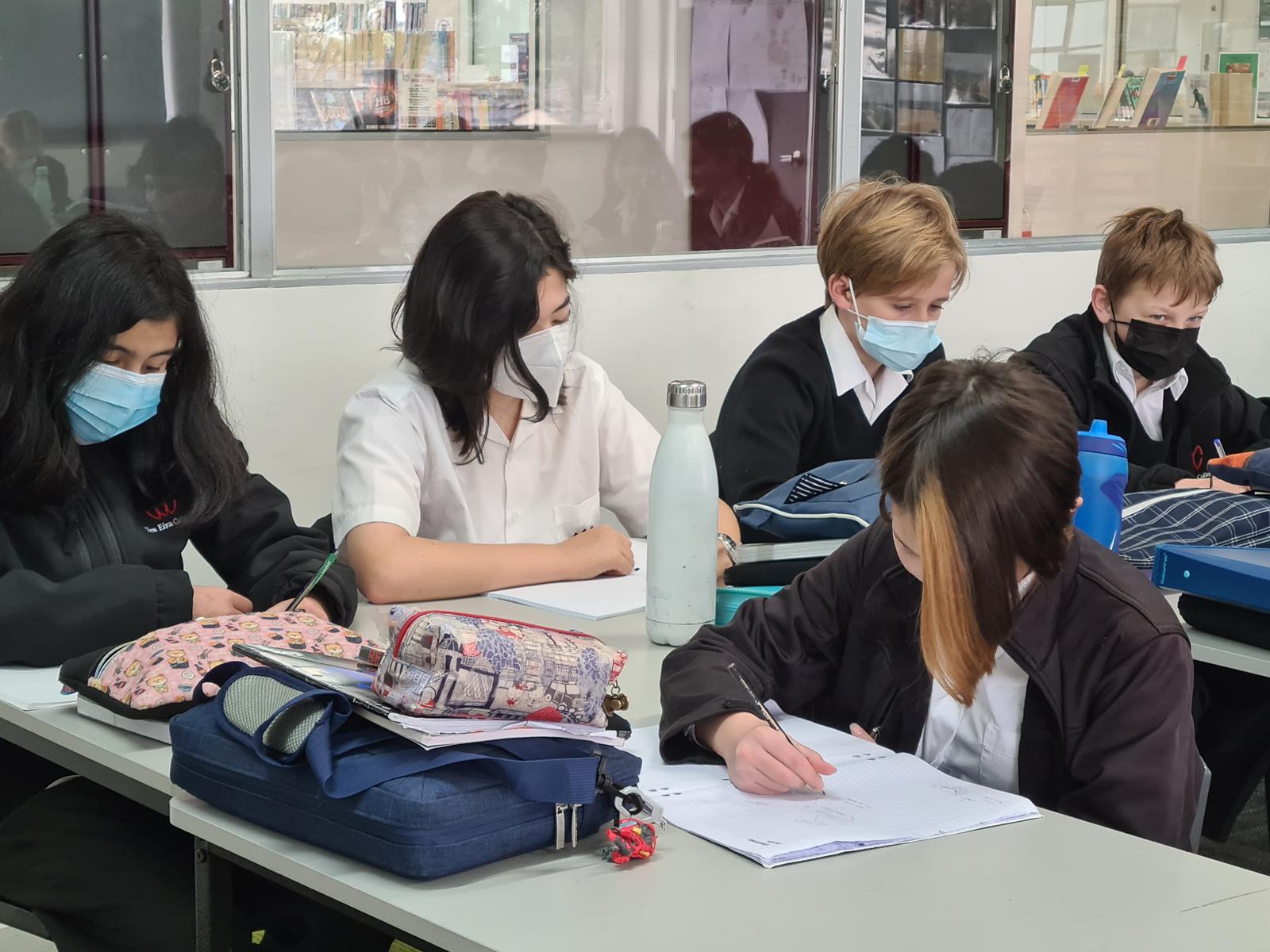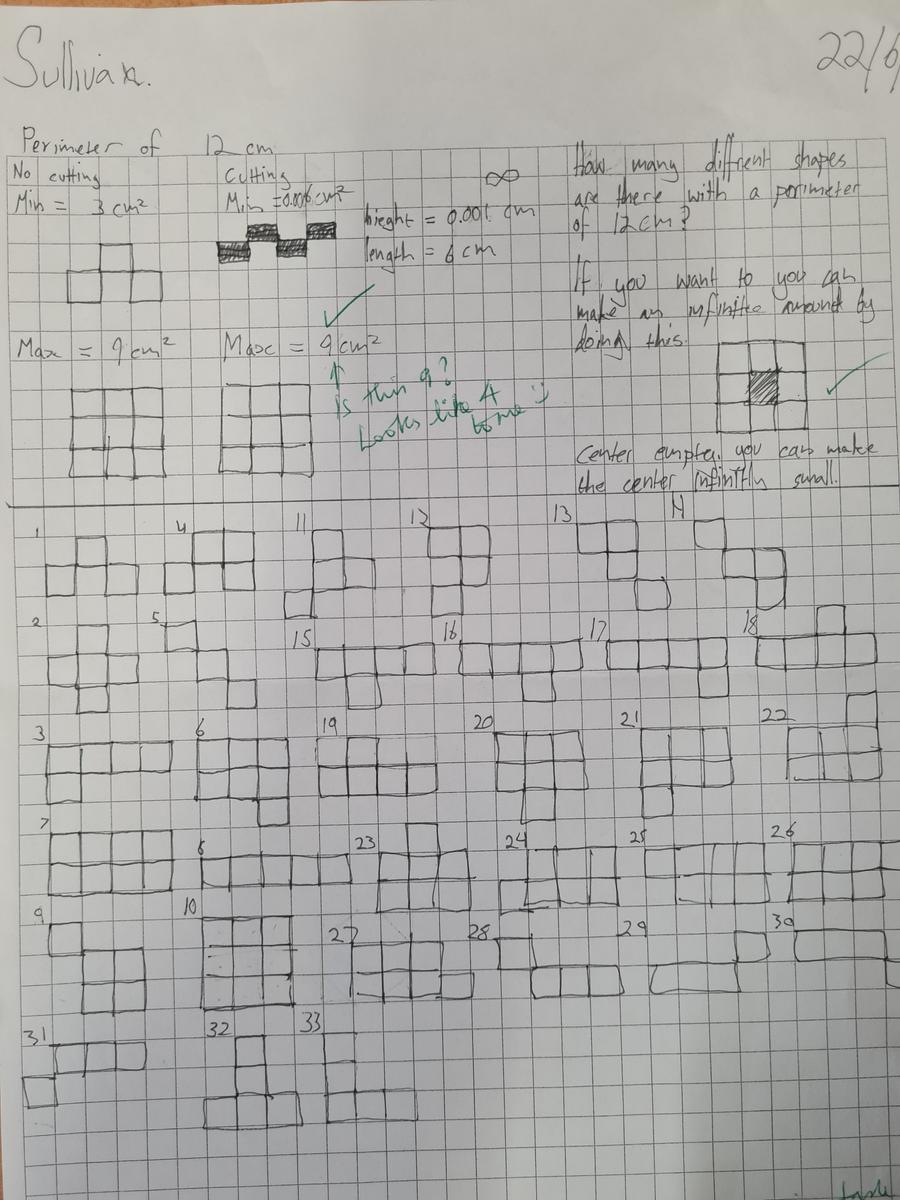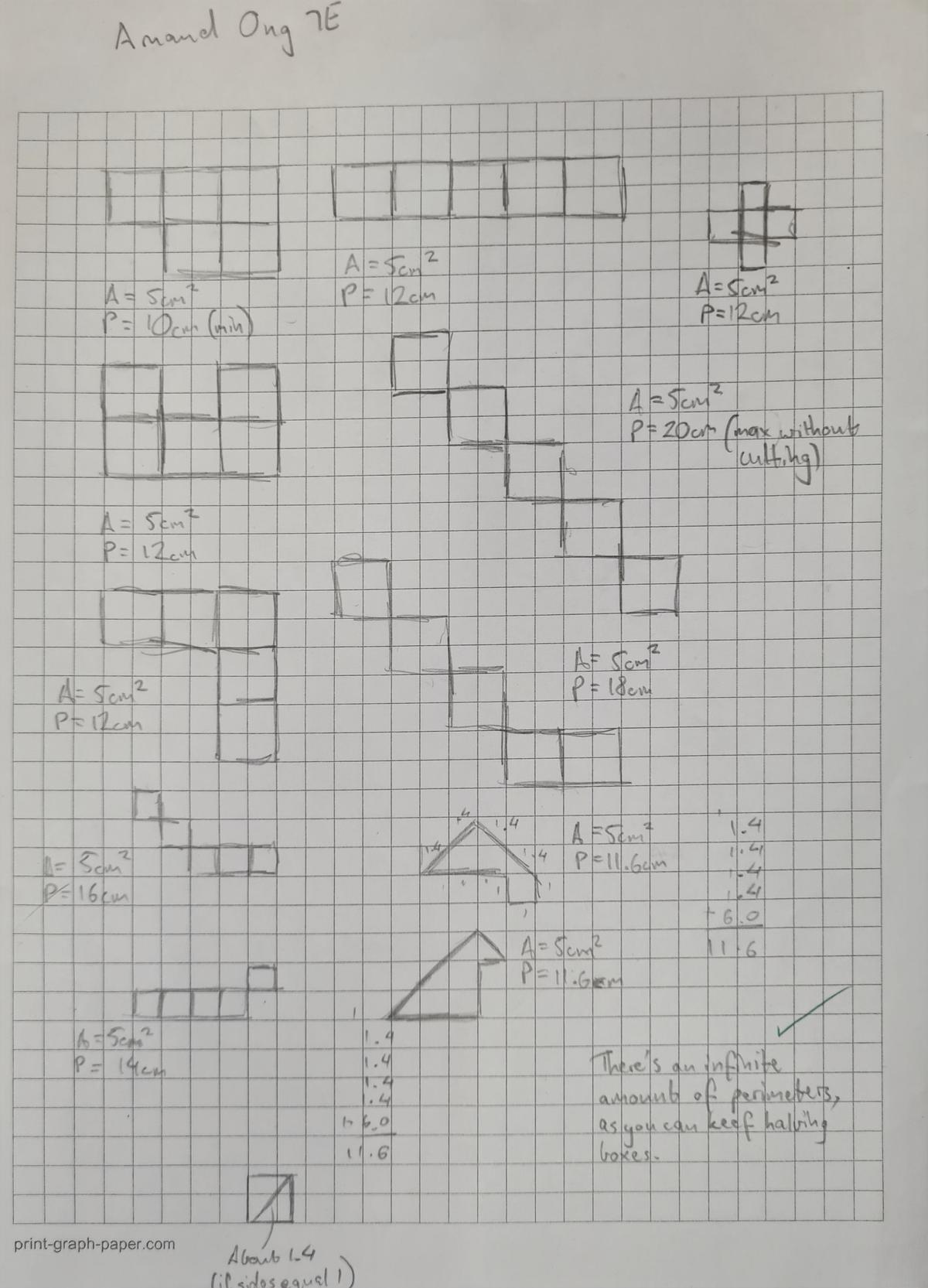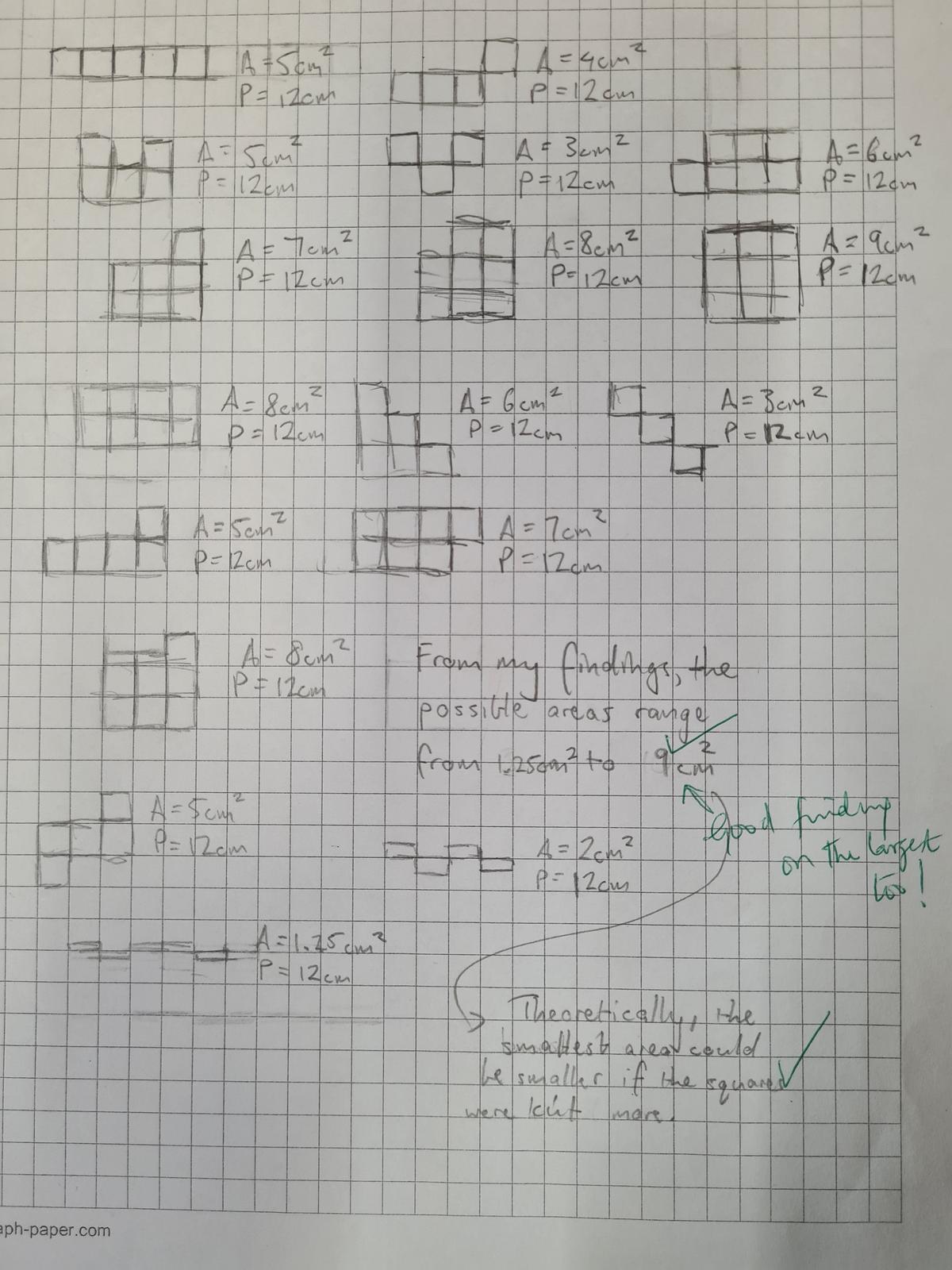Mathematics @ GEC
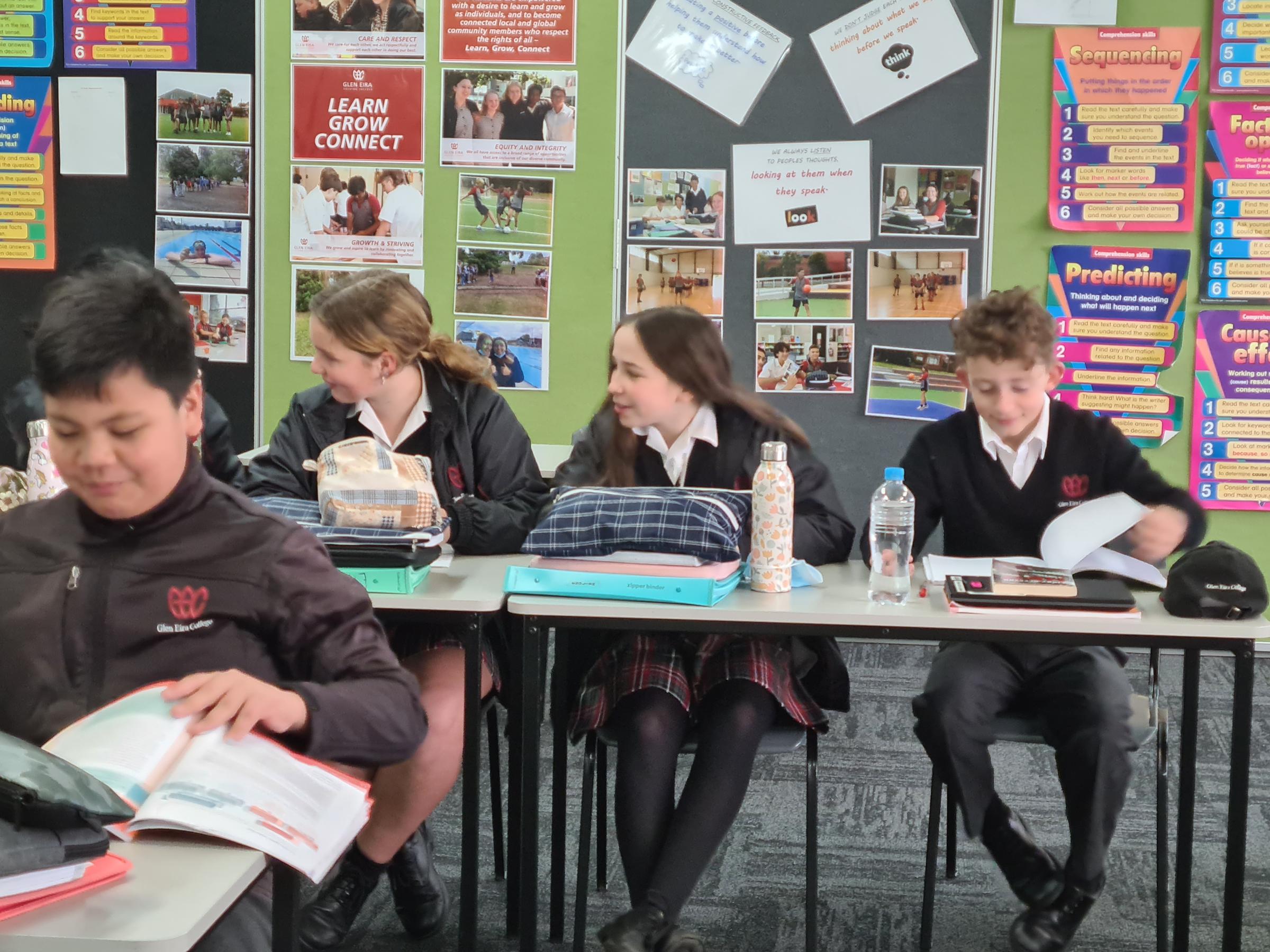
Students have been actively participating in various Maths activities in different year levels.
Year 8s have been learning about percentage changes, proportions, rates and ratios and were working collaboratively in teams to investigate problems involved around these concepts.
Year 10s have been learning about trigonometric ratios and applying them to find unknown lengths. The Year 10 classes worked in teams to find the height of the GEC building using inclinometer, trundle wheels and their knowledge of trigonometric ratios.
Year 7s have been learning about units of Measurement, perimeter, area, surface area, volume and capacity leading into completing a project where they design and make their own fish tanks. They participated in various investigation tasks such as exploring the different perimeters that they can make with the area of 5 square units. It was amazing to hear from them how they can make a shape of infinite perimeter when the square units are cut as thin strips and joined.
Students of 7E were asked to write about what they learnt in the unit of Measurement and here are some of their responses:
For the last few weeks the kids in 7E have been working on measurement.
After we did the pre-test, we estimated and measured things in our classroom, such as the windows, chairs, hallway and even ourselves. This activity helped us get to know measurement and understand the different tools you can use for measuring things.
Before we started using our textbooks we learnt how to convert mm to cm etc. We drew a diagram in our books and it helped me so much. We have also learnt how to find the perimeter of any shape by adding the length and the width together. (l + w)
Next we learnt about how to find the area of a shape which was a little bit more difficult because not all shapes were the same. For example, for a square or rectangle you need to multiply the length and width (l x w) but for triangles and parallelograms you need to multiply the base by the height. (b x h) It took a little bit of getting used to but I think everyone now knows how to find which side is the base and where the height is. For composite shapes you need to split it into smaller shapes and then add the area of those shapes together. It requires a little bit more thinking because there is more addition and subtraction involved but it’s quite easy to understand.
Recently we have learnt how to find the capacity of a prism which was a lot easier than I thought it was going to be. You have to multiply the length by the width and then by the height. (l x w x h) I just think of it as finding the area of the base and then just multiplying the height. To practice this, we found the capacity of our classroom 110.
I loved when we learnt about ml and how 1ml is the same as 1cm3 because it just made sense to me because I’ve never known how to change metres to litres.
We started looking at finding the surface area of prisms by adding up all of the faces. We used little squares to make different rectangular prisms and then counted the sides. We also did some drawing on isometric dot paper. Overall I have loved learning about measurement and I have definitely learnt a lot.
-Jessica Allen 7E
In the last few weeks, the students of 7E have completed many different activities in their measurement unit. First they started off by using measuring wheels and rulers to find different measurements of things around the school. Then they learnt how to calculate the perimeter and area of shapes. Then they found the volume of 3d shapes and then converted that into the capacity of those shapes. Finally they found the surface area of shapes and learnt how to draw isometrically.
-Jackson Dry 7E
I learnt about capacity and how to calculate them. Along with that I learnt how to convert measurements and how to calculate perimeter and area. In one of my classes we learned how to measure things with rulers, measuring tape, and measuring wheels. I have always seen measuring wheels around school but never got to learn how to use one so this was a very fun experience for me.
-Leila Iseya-Louey 7E
The Introduction
To start off the unit we had to understand how to find the perimeter and area of a shape. So after various explanations and examples I got to understand the concept of perimeter and area. After my understanding of perimeter and area I got to finish topics in my textbook with ease and it usually took me 10-13 minutes to finish one topic in 10 which is the content we as a class are focusing on.
Estimation
Miss Kumaran had set up a Maths period in which our class had to estimate the lengths of various things around our class room and at the end we would get to measure them. In my opinion that period was amazing because it just wasn’t any ordinary period where the whole class just sat and did questions we actually explored and overall had fun. Lastly I found that I developed a better understanding of estimation because I really experienced it with my friends all over the class. In conclusion, that session of Maths helped me get better at area and perimeter scenarios because sometimes there isn’t an exact number on some sides so you have to estimate.
A Step Up
As the age of 2D shapes left our class we went to 3D shapes and I had no idea how to do anything related to 3D shapes, area and perimeter. So I concentrated on Ms Kumaran’s introductions in which I copied down everything Ms Kumaran said in great detail. I found the formulas interesting because I haven’t even heard of them before. During these periods we got to learn even more about capacity and volume and I found it fun because of the more formulas. Another key point of my recent studies of Maths was the small activities that developed my understanding further. The first activity was working out the capacity of the room we were in and the second was finding different surface areas with a given 12 cubic units. To sum it all up this is my favourite topic of Maths so far this year because of the fun activities and overall helping me understand area, perimeter etc…
-Mitchell Livingstone 7E
The first activity we did for the Measurement topic was finding different perimeters for the same area of 5 square units. In this activity, we learnt about trial and error in the learning process, and then finding out new strategies from that. For example, we learnt that halving squares and putting them diagonally from each other maximised the perimeter of a shape with the given area.
Estimating and measuring different lengths of our classroom/school was a task where we discovered how to make good estimates. We learnt this by getting the gist of what measurements (such as metres) look like by physically measuring them, which helped us estimate how long or wide another object might be.
To work out the capacity of Room 110, we had to understand how to work out volume, then convert that to capacity. By measuring the length, width and height of the classroom, we calculated the volume of our classroom. Using the conversions between volume and capacity that we had learnt earlier, we were able to find out the capacity of our room. This strengthened our understanding of calculating capacity.
In our final activity, we learnt about calculating the surface area of given volume prisms. We discovered our own strategies to calculate surface area, as we had not learnt it before. We learnt that to make prisms from a given volume, you have to find factors of that volume that when multiplied become the volume. This activity strengthened our understanding of surface area, and creating prisms from a given volume.
-Arnaud Ong 7E
I enjoyed discussing the capacity of our classroom Room 110. I think this discussion was very interesting for everyone. It made us think deeply, and this working out included estimating, calculating and also communicating skills too for discussion with our class. Throughout this discussion, I think it made me improve many skills that are needed for mathematics.
-Riku Takano 7E
Arivu Kumaran
Head of Mathematics

